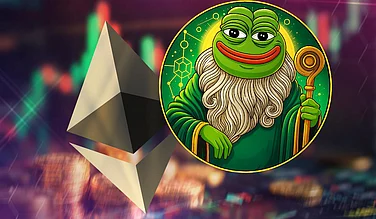As the metaverse rapidly evolves from early-stage virtual environments into interconnected digital economies, one notion seems to have emerged at the heart of its next level of maturity: interoperability across metaverses. When assets, avatars, currencies, and experiences can move freely across multiple virtual worlds, the metaverse shifts from isolated silos to a dynamic, borderless digital universe.
This article examines the mechanics of interoperability, why it dramatically increases the demand for metaverse tokens, and how it creates investor trust.
Understanding Cross-Metaverse Interoperability
Cross-metaverse interoperability could be explained as undisturbed porting of digital assets, identities, and functionalities within virtual worlds. Just as the internet today allows users to shift from one website and platform to another without creating different identities, so does the interoperable metaverse promise continuity through blockchain technology.
Core Elements of Interoperability
1. Digital Asset Interoperability
Allows NFTs, avatars, wearables, and in-game items to move across worlds.
2. Cross-Chain Compatibility
Utilizes protocols like layer-0 networks, bridges, and oracle systems that can connect different blockchains that power various metaverses.
3. Decentralized Identity (DID)
A user's reputation, credentials, or social history follow them across platforms.
4. Common Standards & Protocols
Adoption of universal formats for 3D models, NFT metadata, smart contracts, etc.
5. Economic Interoperability
They can be spent, staked, traded, or used as utility across many ecosystems.
Combined, these elements make for a sound basis of virtual economies and substantially raise the value of their native tokens.
How Interoperability Increases Token Demand and Investor Confidence
1. Multi-World Utility Increases Token Use Cases
Token adoption grows directly in relation to the use cases it has.
If one token works in just one metaverse, then the demand for it is limited.
But when interoperability lets the same token function across multiple worlds, its utility multiplies.
Effects on Demand
Users prefer that their tokens be cross-platform for convenience.
Developers are incorporating interoperable tokens into more apps.
They are accepted as settlement currencies in marketplaces.
Games and metaverses are enabling shared token economies to facilitate greater engagement.
A token that powers three, five, or ten metaverses is going to see exponentially higher demand than a token confined to only one world.
2. Lower Ecosystem Dependence Means Less Investor Risk
Most investors don't invest in virtual worlds because of platform risk: What if this project fails?
Interoperability greatly reduces this fear.
How It Increases Confidence
Tokens retain their value when one metaverse starts losing steam.
Assets can be moved between interoperable ecosystems and traded there.
Its worth is not based on the success of one single project.
This inherently builds trust when investors know their assets maintain utility across multiple worlds.
3. Larger Active User Base = Higher Liquidity
One of the major indicators showing that a token is healthy is its liquidity.
In interoperable ecosystems,
More users are interacting with the token.
More marketplaces support it.
More transactions are conducted per day.
Cross-platform activities that drive continual momentum.
This continuous activity increases buying and selling possibilities, reduces slippage, and attracts more investors due to the fact that it is relatively easy to get in and out of the market.
4. Better Developer and Brand Ecosystem
Developers and brands are the backbone for metaverse expansion. Interoperability gives them strong incentives to build:
Builder Benefits
This spreads the company's assets to a bigger user base.
Their tools can be reused across several worlds. They can sell universal avatars, items, or experiences.
Brand activations become cross-world marketing assets.
Richer ecosystem participation raises the value of the token by increasing use cases, user activity, and marketplace exposure.
5. New Revenue Streams Across Connected Worlds
Interoperability spurs economic creativity. Brands, players, builders, and creators can earn in one world and spend in another.
Cross-World Revenue Examples
A wearable earned in Sandbox could be sold in Decentraland.
A virtual event ticket purchased in Somnium Space could give access to partner metaverses.
Game rewards could be staked across multiple DeFi-enabled virtual economies.
The multi-platform revenue loop continuously drives more token circulation, leading to more demand.
Closed vs Interoperable Metaverse Economies
Feature | Closed Metaverse | Interoperable Metaverse |
Asset Portability | Locked to one platform | Movable across many platforms |
Token Demand | Limited | Increased by broad utility |
Investor Confidence | Lower | Higher due to diversified risk |
Liquidity | Restricted marketplace | Global multi-platform liquidity |
Growth Potential | Slower | Scalable network effects |
Network Effects Strengthen Token Valuation
The more metaverses a token can operate in, the stronger its network effect.
Interoperability creates a compounding growth cycle:
More users → more transactions
More developers → more applications
More applications → more utility
More utility → more demand
More demand → higher prices and investor interest
Tokens that fuel interoperable economies naturally appreciate over time because their value isn’t tied to one community but to an expanding interconnected universe.
Boosting Long-Term Ecosystem Sustainability
Interoperable systems are more resilient against failure because:
They are supported by multiple platforms, not just one.
They continuously evolve as new metaverses join.
They encourage shared innovation through open standards.
They reduce user exit risk—because assets never become obsolete.
This sustainability reassures investors, making them more willing to hold assets long-term.
Metaverse Tokens as the Backbone of Interoperability
Interoperability strengthens the real-world value of metaverse tokens by transforming them into multi-ecosystem crypto currencies. Rather than limited in-game currencies, they evolve into critical infrastructure assets powering cross-world payments, rewards, staking, governance, and virtual ownership systems. This universal utility places them at the center of digital economies, which directly boosts token demand.
Steps for Implementing Interoperability Across Metaverses
1. Adopting Shared NFT Standards
Use common formats like ERC-721 and ERC-1155.
Allow interoperable metadata and animation files.
2. Employing Layer-0 Protocols & Bridges
Connect different blockchains and metaverses.
Enable asset swapping and movement.
3. Integrating Decentralized Identity Systems
Let user profiles, avatars, and reputations travel across platforms.
Enable cross-world social interactions and commerce.
4. Creating Unified File Formats
Standardizing 3D model formats like GLTF for avatars and inventory items ensures smooth movement.
5. Cross-Platform Security
Smart contract audits, zero-knowledge proofs, and multi-chain verification ensure assets remain safe.
These steps help create a digital environment where assets flow naturally, enhancing token demand and ecosystem participation.
Impact on User Experience: A More Fluid Digital Life
Interoperability transforms the user experience in multiple ways:
Single identity across worlds
Unified inventory (NFTs, wearables, achievements)
Migration of in-game assets to new platforms
Cross-platform earning opportunities
Shared social connections
Users no longer feel confined. Instead, they experience the metaverse as a fluid, interconnected digital lifestyle, which encourages continued engagement—and indirectly strengthens token adoption.
Conclusion
Cross-metaverse interoperability represents one of the most transformative shifts in digital ecosystem design. By enabling assets, tokens, and identities to flow freely across virtual worlds, interoperability significantly enhances token demand, reduces investor risk, boosts liquidity, and creates richer multi-world economies.
It positions Metaverse Tokens as universal digital currencies—capable of powering seamless cross-platform activities and economic interactions. This collective web of interconnected metaverses establishes long-term sustainability, strengthens developer engagement, and builds widespread investor confidence.
As the metaverse continues to expand, interoperability will be the foundation enabling its transition from isolated worlds into an open, global, thriving digital society.
FAQs
Q1. What is cross-metaverse interoperability?
It’s the ability to move digital assets, identities, and tokens across different metaverse platforms. This enables a unified and connected virtual ecosystem.
Q2. How does interoperability affect metaverse growth?
It supports growth by expanding user activities across worlds, increasing developer collaboration, and reducing economic fragmentation. This encourages higher adoption and token demand.
Q3. Does interoperability increase the value of tokens?
Yes. When a token operates across multiple ecosystems, its utility increases. This leads to stronger demand, more liquidity, and higher investor confidence.
Q4. Is interoperability necessary for the future of metaverses?
Most experts agree it is essential. Without interoperability, metaverses remain fragmented. With it, the metaverse functions as a seamless, scalable global digital society.
Q5. How do tokens benefit from interoperability?
Tokens gain:
Broader use cases
Larger user base
Wider marketplace support
Stronger liquidity
Lower investor risk
Q6. Are interoperable NFTs more valuable?
Yes, because they can be used or traded across multiple platforms rather than being restricted to one ecosystem.
Q7. Are there risks with interoperability?
Challenges include cross-chain security, smart contract vulnerabilities, and standardizing file formats. However, protocols like Layer-0 networks and zk-proofs are addressing these issues.
Q8. What technologies enable metaverse interoperability?
Blockchain bridges
Oracles
Layer-0 networks
Decentralized identity (DID)
NFT standards
3D file standards

























